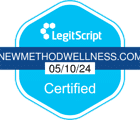The natural high cannot be compared to the drug rush
Any time you do something fun, exciting, or meaningful, your brain produces dopamine, a neurotransmitter that makes you feel a rush of reward and pleasure. Dopamine has to do with motivation; the first time you experience a rush from eating certain foods or performing certain activities, dopamine motivates you to eating and doing the same things, so you can once again have those pleasant experiences. If you meet someone who is a lot of fun to be around, you will consider spending time with that person again, because your memories associated with this person are pleasant and inviting. Pleasant people and activities naturally raise the dopamine levels in your brain, motivating you to do the same things with the same people again. Unfortunately, drugs and alcohol spike the levels of dopamine so dramatically that the natural high you feel when performing normal fun activities does not compare to the surge of pleasure you feel when experiencing a psychoactive drug for the first time. For someone to be able to experience life’s pleasures once again without drugs and alcohol, Rebooting Your Brain from Substance Use is necessary. The extent to which the brain needs to be rewired depends on the depth of substance abuse addiction.
What happens to the brain after someone gets high?
The crash after the high varies from one person to another, but it can be narrowed down to three different effects: the comedown, the rebound effect, and the crash.
The Comedown describes the emotional experience as the effects of the drug wear off. While a pleasant experience for some, the unpleasant experience for others can also trigger a return to drug use. The effects of the comedown are based on the type and dosage of the drug, the individual’s drug history, and the individual’s own bodily response to the drug.
The Rebound Effect refers to withdrawal symptoms that are opposite to the effect of the drug that was used. The “teeter-totter principle” best describes the Rebound Effect: use of depressants such as alcohol and benzos would produce hyperactivity, agitation and anxiety, whereas use of stimulants such as cocaine and meth would produce fatigue and depression. The rebound period is the body’s attempt to restore internal equilibrium, referred to as homeostasis.
The Crash, a type of rebound effect, is the withdrawal fatigue commonly associated with illicit stimulants such as cocaine, meth, and ecstasy, as well as legal stimulants such as coffee, Ritalin and Adderall. When the stimulating effects of the drug wear off, the individual can experience debilitating fatigue as the body recovers from hyperactivity and effects of the drug.
What does “Rebooting Your Brain from Substance Use” mean?
To recalibrate the brain is to “reset” or “reboot” it to begin anew. The brain recalibrates naturally every time you go to sleep, as suggested by numerous studies. According to findings from a research study at the Johns Hopkins University School of Medicine, while you are sleeping, your brain processes information to solidify learning and memory, which explains why those with sleep deprivation or sleep disorders have trouble with memory loss.
With regard to substance use and addiction, recalibrating the brain is not as simple as it sounds. The use of psychoactive substances such as alcohol, cocaine, and marijuana considerably changes the structure of the brain, causing brain damage that would require professional intervention utilizing evidence-based techniques such as PsychoNeuroPlasticity (PNP).
Where is PsychoNeuroPlasticity (PNP) used?
New Method Wellness, a premier dual diagnosis addiction treatment center based in San Juan Capistrano, California, uses the most advanced forms of treatment modalities such as PsychoNeuroPlasticity to treat substance abuse addiction. In addition to PNP, New Method Wellness also uses holistic therapy such as yoga, nutritional counseling, and meditation to improve overall treatment outcomes. Their dual diagnosis treatment of substance abuse addiction is based on the principle that individuals are comprised of mind, body and spirit – and a holistic approach to healing would address all aspects of a person rather than isolating treatment of substance use disorder from other maladies.
For more information about our PNP program, call 866.951.1824 today!
See why Dr. Phil recommends New Method Wellness!







